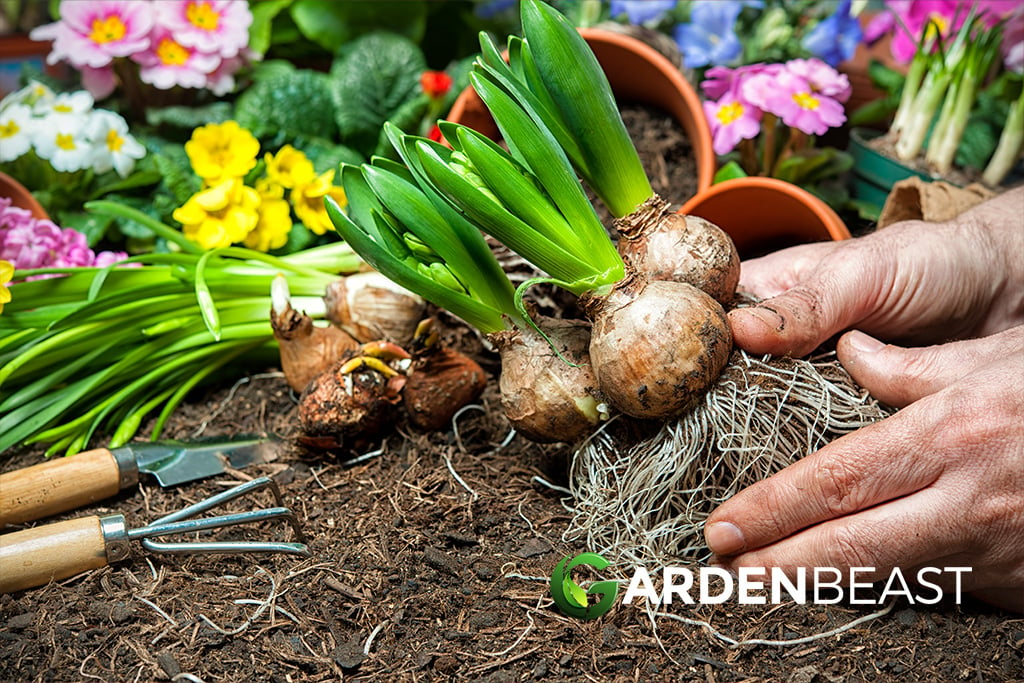 All You Need to Know to Grow Them" width="788" height="525" />
All You Need to Know to Grow Them" width="788" height="525" />Bulb plants are beloved by gardeners for their lively coloured flowers which can bring any garden to life. The most popular bulb plants are planted in autumn, and they bloom in spring.
By Miruna Secuianu June 9, 2023
 All You Need to Know to Grow Them" width="788" height="525" />
All You Need to Know to Grow Them" width="788" height="525" />
Affiliate Disclosure: We independently test & research all products reviewed on the site. We may earn a small commission if you buy through one of our links. This does not affect our reviews or placement of products on the site.
Bulb flowers are beloved by gardeners for their lively colored flowers which can bring any garden to life. The most popular bulb plants are planted in autumn, and they bloom in spring. There are also some bulbs that can be planted in spring, and they bloom during summer or even at the beginning of fall.
Some bulb plants can be planted in containers, and they can bloom even throughout winter. In the following lines, we will discuss some of the advantages of these ornamental plants. If you decide to try planting bulbs, we have some tips to get you started, as well as a selection of the best bulb plants to start with. Last but not least, we will share a few of our gardening secrets to help you take excellent care of your bulb plants.
Table of Contents
Bulbs plants are technically perennials. Some people may confuse certain bulb plants with annuals. This confusion only appears where climate conditions are not suitable for the perennials to come back the following year.
The term ”bulb plants’ defines not only true bulbs but also other bulb-like buds which are planted when they are dormant such as tubers, rhizomes, and corms. These notions can be a bit confusing, so you’ll find more information on the different types of bulbs in the next section.
As we already mentioned, several types of fleshy buds are known as bulbs, although they are not all technically bulbs. Here are the main types of plants that are considered bulbs:
You can recognize true bulbs by their distinct onion shape. They usually feature fleshy layers. The layers are the precursors of the leaves. In fact, they are the embryo version of leaves. They protect the stem and the flower which are located in the center of the bulb. The nutrients necessary for the plant’s growth are also stored in the scales. True bulbs can often have tunics. The tunic is a type of papery skin that protects the leaves. The most popular true bulbs are tulips, alliums, lilies, and daffodils.

At first sight, it is very hard to distinguish a true bulb from a corm. The main difference lies inside. Bulbs are made of concentric scales, whereas corms feature a solid mass. They also have a flat base and they feature tunics. The most popular corm plants are anemones and hyacinths.
Most rhizomes look like ginger. The rhizome represents an underground stem that stores food. They grow near the soil surface and can be propagated through divided. The most popular irises are Cannas and irises.
Tubers can be either underground stems or underground roots. They all look similar and can store great amounts of food. Popular tubers include begonias, dahlias, and certain anemones. Tubers can also be propagated through division.
If you are still not sure whether it is worth your time to plant some bulbs in your garden, we’ll surely convince you. Here are a few excellent points that will make you fall in love with bulb plants:
Bulb plants are extremely diverse. They come in different shapes and sizes. Moreover, their blooms cover almost all possible colors. From sunny daffodils to purple alliums and almost black tulips, bulb plants are an explosion of color. They will suit any garden style and space.
If you are looking for an inexpensive way to improve your outdoor area, bulb plants are a perfect solution. You can easily find bulbs in nurseries, markets, and even online, and most are very affordable so you’ll be able to grow a colorful garden without worrying about the costs.
Planting bulbs is very easy and it can be done by an inexperienced gardener without too much effort. All you have to do is to plant them a few cm deep in the soil and wait for them to sprout.
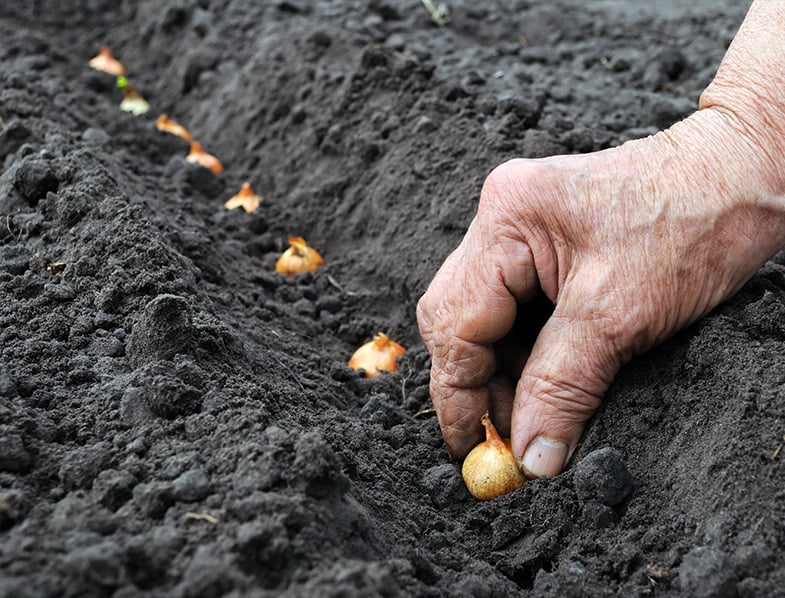
As we already mentioned, bulb plants can be planted at different times. As such, if you plant different types of bulbs, you can enjoy colorful blooms almost all year long. Spring bulb plants are usually more colorful. Summer bulbs tend to have a stronger scent and autumn plants are bigger and have a more dramatic look.
Bulb plants are relatively easy to take care of. Here are some general tips that you should keep in mind:
Each season brings a wide range of bulb plants that can add colour and joy to your garden. To enjoy a lively garden most of the year, combine bulb plants with different blooming periods. No bulb plants will bloom outdoors during wintertime, but a couple of them will bloom indoors.
Snowdrops – These are among the first few blooms to appear once the snow has melted. All snowdrops look the same at the first glance. They are about the size of a thumbnail with pearly white blooms. However, there are several distinct species that present slight differences in size and shape.
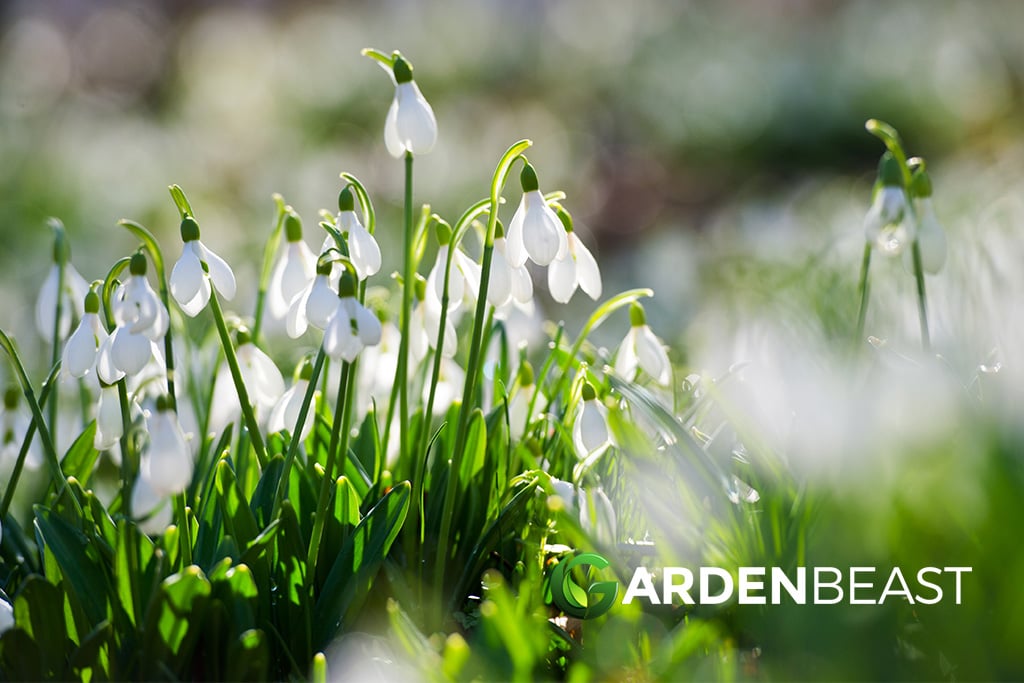
You can learn more about growing and caring for these delicate plants from our complete guide to Snowdrops.
Crocus – These flowers are also among the first to appear after winter. Sometimes they shoot right out of the snow. They reach a top height of 8 cm and their blooms are purple, white, yellow, red, or pink. Crocus flowers make great additions to garden beds, rock gardens, lawns, cottage gardens, and woodland gardens, thanks to their tolerance of growing in the shade of trees.

You can plant them around your shrubs and even in containers. Learn more about them from our complete guide to Crocus.
Daffodils – These sunny flowers are among the most iconic ornamental plants thanks to their eye-catching blooms and nice fragrance. Daffodils can reach a top height of 70 cm and a top width of 25 cm. The blooms are yellow with six lobes and a central bell-shaped crown. When planting Daffodils, it is important to remember that they need at least 6 hours of direct sunlight each day. They can survive in partial shade, but they won’t bloom. So make sure you plant your Daffodils in a sunny location.

Learn more about growing and caring for these beautiful flowers by reading our complete guide to Daffodils.
Scillas – These small flowers reach a top height of 15 cm. They feature small star-shaped blooms. The most popular blooms are blue but they can also be white, pink, blue, purple. They thrive in full sun, but they can have decent growth even in partial shade.
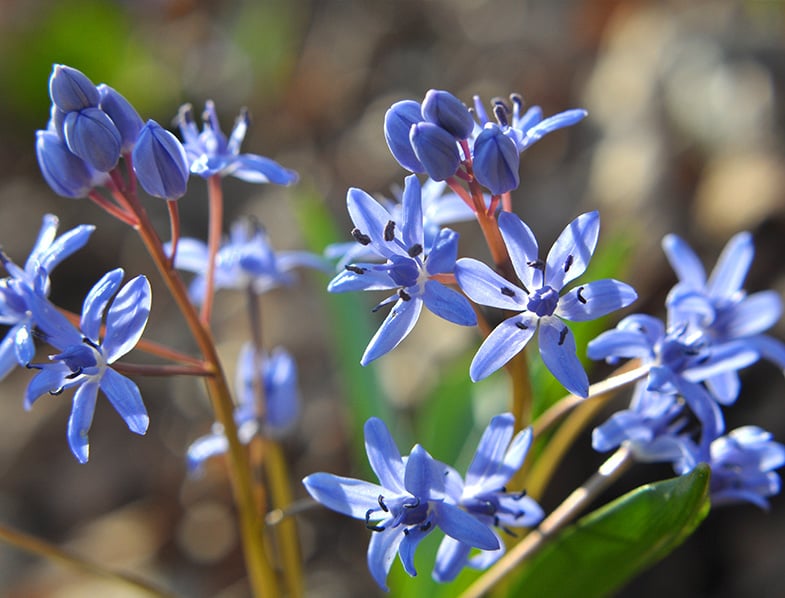
Tulips – With their classic beauty and mesmerizing blooms, tulips will complement any garden. Reaching a top height of 60 cm with a top width of 6 cm, tulips make perfect additions to all types of gardens, large or small. They feature cup-shaped flowers in a wide range of colours such as white, pink, red, yellow, purple, orange, and even black. The blooms can also be multi-coloured and their shapes can differ. Tulips are big lovers of sunlight so they will need at least 6 hours of direct sunlight.

Learn everything about growing and caring for them from our complete guide to Tulips.
Hyacinths – These flowers are prized for their intense scents and stunning flower stalks. They reach a top height of 30 cm and a top width of 20 cm. Their long-lasting blooms come in a broad spectrum of colours including white, pink, blue, purple, apricot, crimson, and purple. They grow well both in full sun and partial shade, so you can plant them anywhere.

If you want to add these beautiful ornamentals to your garden, make sure you read our complete guide to Hyacinths.
Muscari – These bulb plants are very similar to hyacinths, but they are smaller and their blooms are cup-shaped and not star-shaped. Muscari plants thrive in bright light and relatively cool temperatures, and they will bring a dash of colour to your garden every spring. Resembling clusters of tiny grapes, Grape Hyacinths are absolutely adorable and you’ll fall in love with them as soon as you see them.
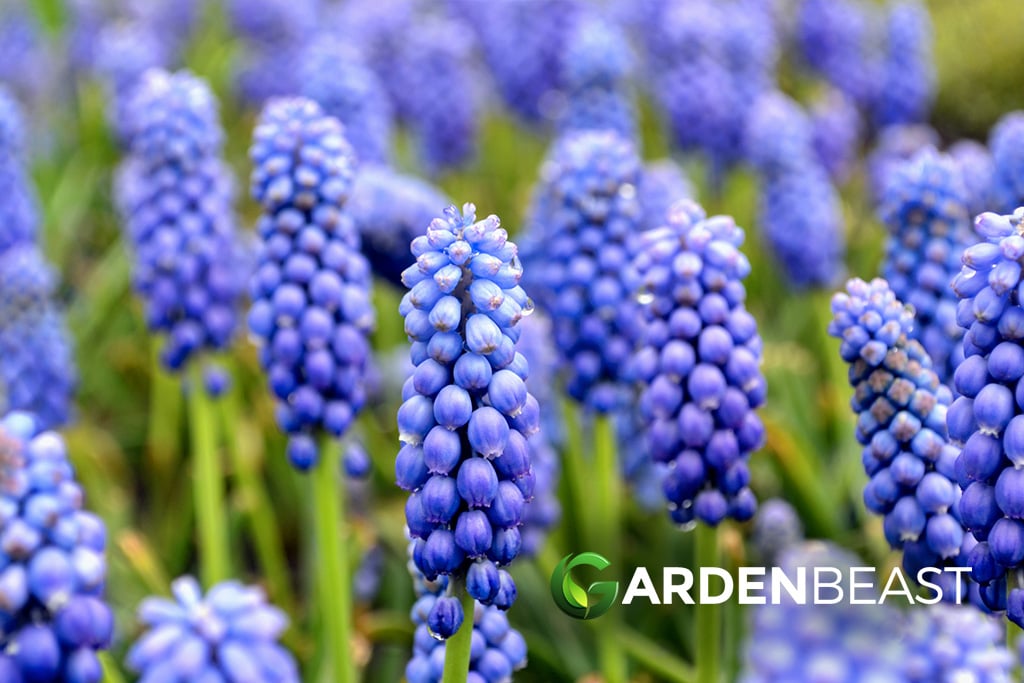
You can find more info on these amazing bulb plants in our complete guide to Muscari.
Anemones – Commonly known as windflowers, Anemones are symbols of spring, warmth, and happiness. These are large plants that reach a top height of 120 cm and a top width of 90 cm. They thrive in light shade, but they can also do well in full sun, in cooler climates. You can grow Anemones both indoors and outdoors, and you can even use them in bouquets and flower arrangements.
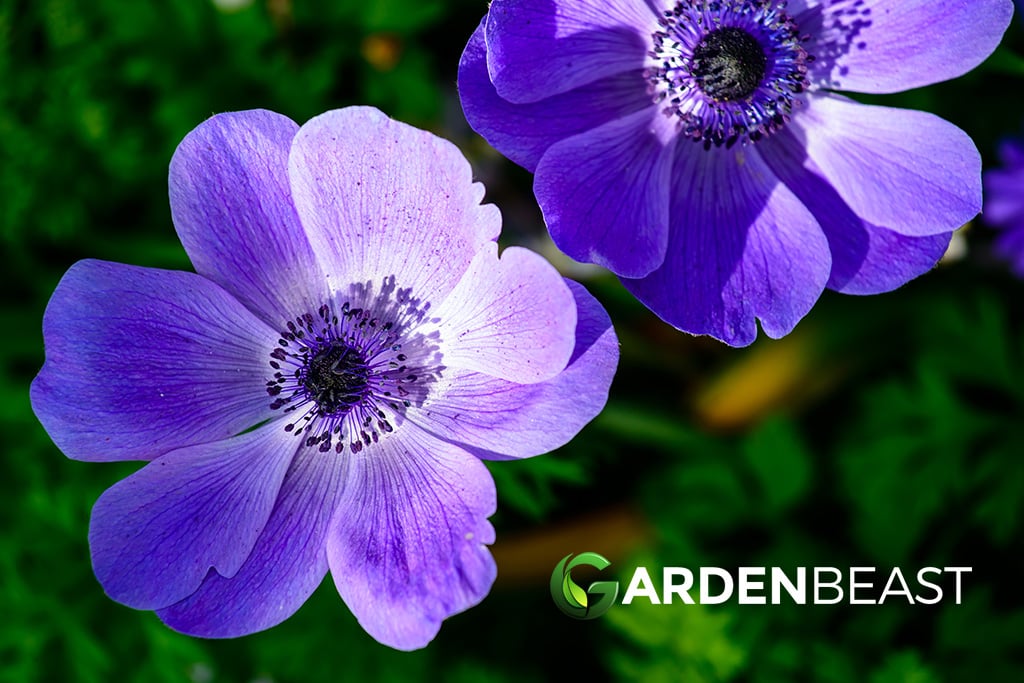
Learn more about them from our complete guide to Anemones.
Dahlias – These flowers must be planted in late spring and they bloom in late July. They reach a top height of 150 cm. The size of their blooms can range from lollipops to dinner plates. The blooms are usually shaped like spears. They come in a rainbow of colours including white, yellow, pink, lavender, peach, orange, yellow, and bi-colour. Dahlias are truly spectacular and they are very easy to grow and to care for.

Gladiolus – You can plant Gladiolus a.k.a. Sword Lilies from late spring to mid-summer and expect them to bloom in late summer or mid-autumn. They can reach a top height of 150 cm. They look like oversized crocus plants and come in a wide array of colours including pink, purple, crimson, yellow, green and white. They thrive in full sun, so make sure you plant them in a sunny location of your garden.

Lillies – Just like Gladiolus plants, Lilies are a great way to add height to your garden. They reach a top height of 180 cm. The flowers can have different shapes and colours, depending on the species. They are yellow, white, pink, red, and orange and they come in various shapes like stars, trumpets, bowls, or funnels.
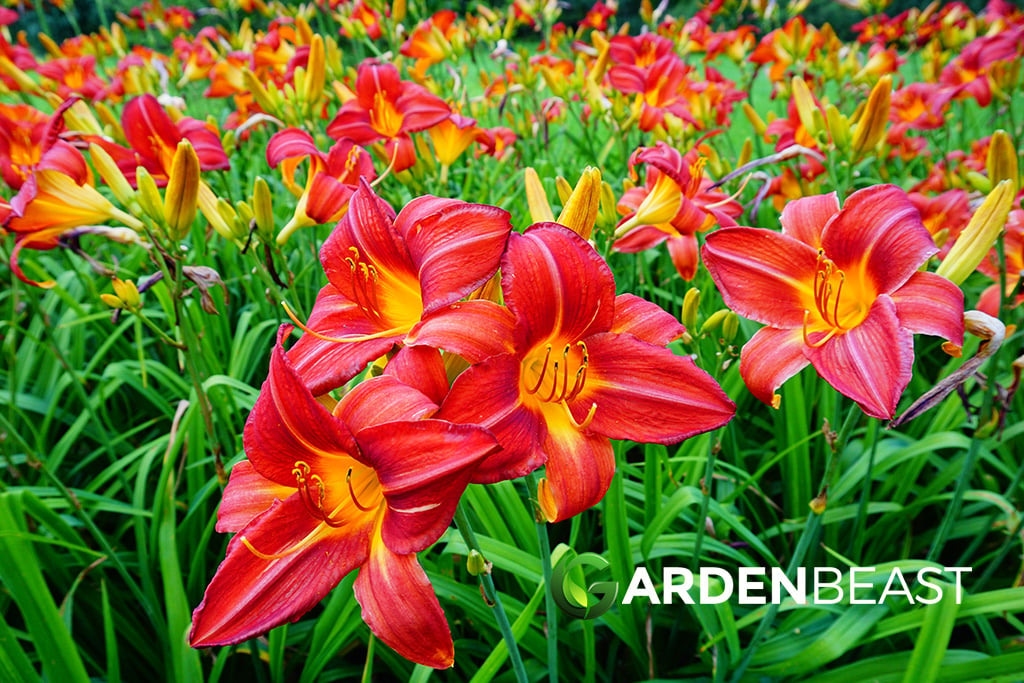
Begonias – It is best to plant begonias in late spring and you will enjoy their blooms from summer until frost. They reach a top height of 30 cm and they are prized for their abundance of blooms. The flowers come in shades of pink, orange, red, white, and yellow. They prefer indirect sunlight or partial shade.

Cannas – These plants are appreciated not only for their blooms but also for their extravagant foliages. Their leaves can have variegations and the leaf colours range from light green to dark purple-tinted green. They reach a top height of 180 cm. The blooms come in shades of yellow, pink, red, and orange.
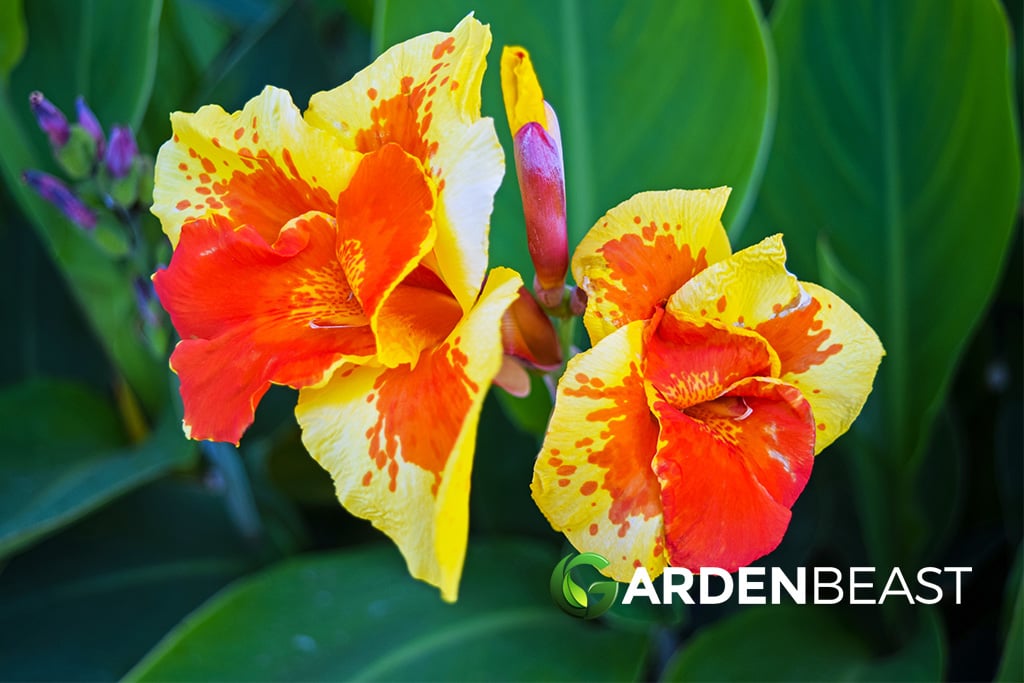
Caladiums – Blooms are not the only plants that will bring life and colour to your garden. If you are looking for interesting foliage that lasts until fall, Caladiums are your best bet. Plant them in early spring in a location that gets bright, indirect sun. They feature beautiful foliage and make perfect additions to all styles of gardens, so do not hesitate to learn more about Calladiums.
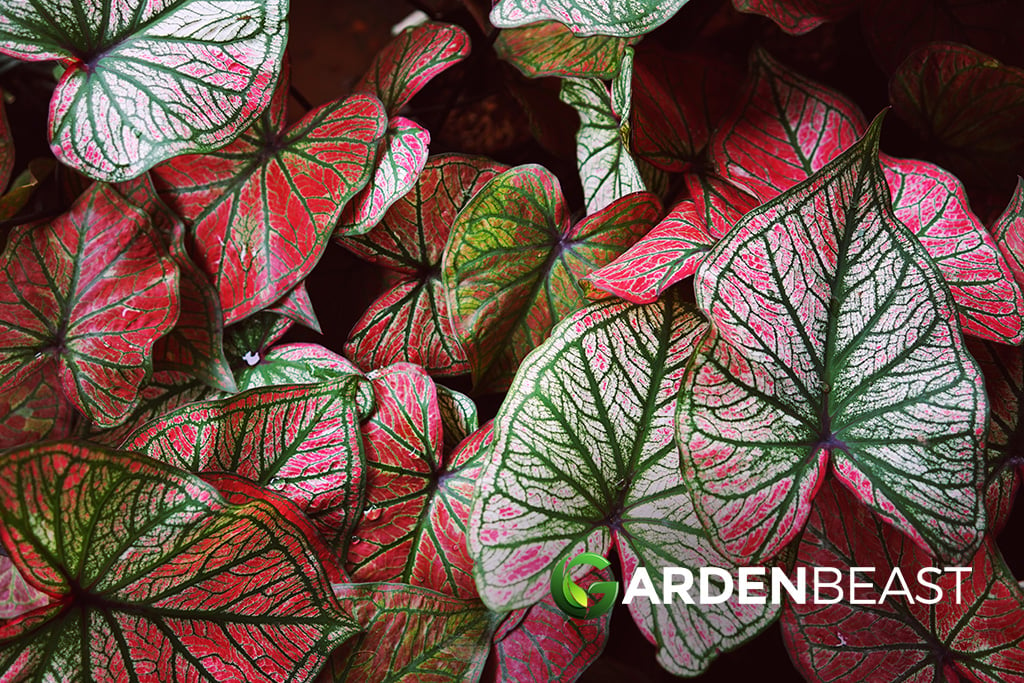
Calla lilies – Plant these bulbs in early spring after the passing of the first frost. Their blooms last from mid-summer to mid-autumn. They need full sun exposure when planted in an area with cool summers. However, in hot summer areas, they perform better in partial shade. Calla Lilies make perfect pond plants, as they are big lovers of moisture.
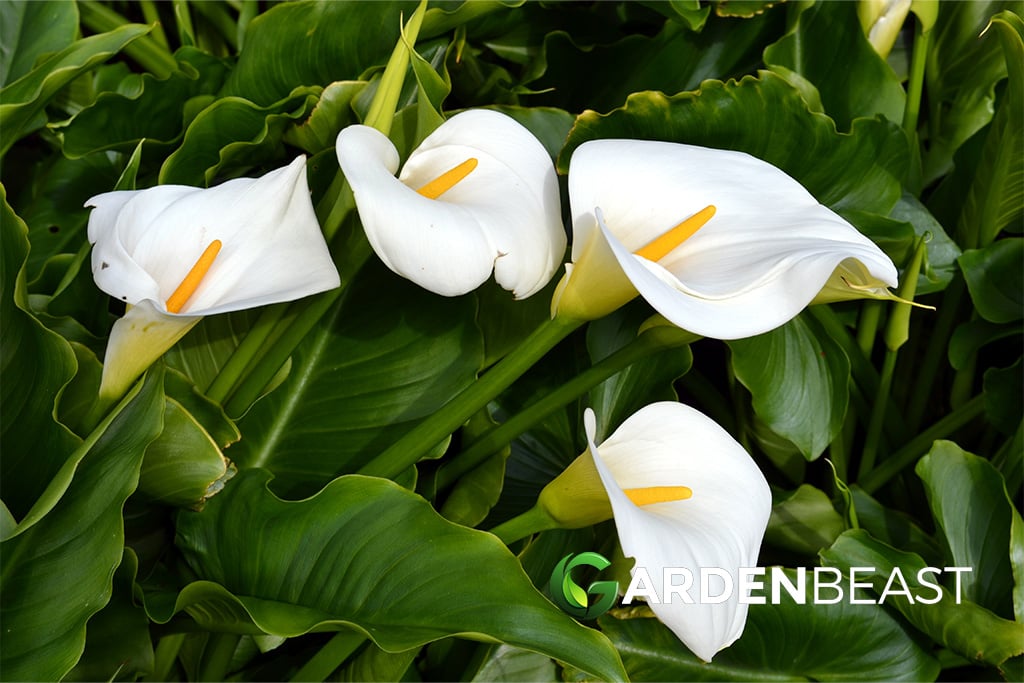
Amaryllis – You can plant these bulbs outdoors in early spring and they will bloom in early summer. Nonetheless, you can also plant them in containers in November and enjoy their blooms all winter long. In containers, Amaryllis plants reach a top size of 40 cm. Their blooms can be red, white, pink, rose or burgundy and the flowers are star-shaped. Learn more about these fascinating winter-blooming plants from our complete guide to Amaryllis.

Narcissus papyraceus – Also known as Paperwhites, these mesmerizing flowers can be planted in containers in mid-autumn. They will bloom for a couple of months so they have a long blooming period. They thrive in bright indirect light. The blooms are usually white, but can also be orange or yellow.
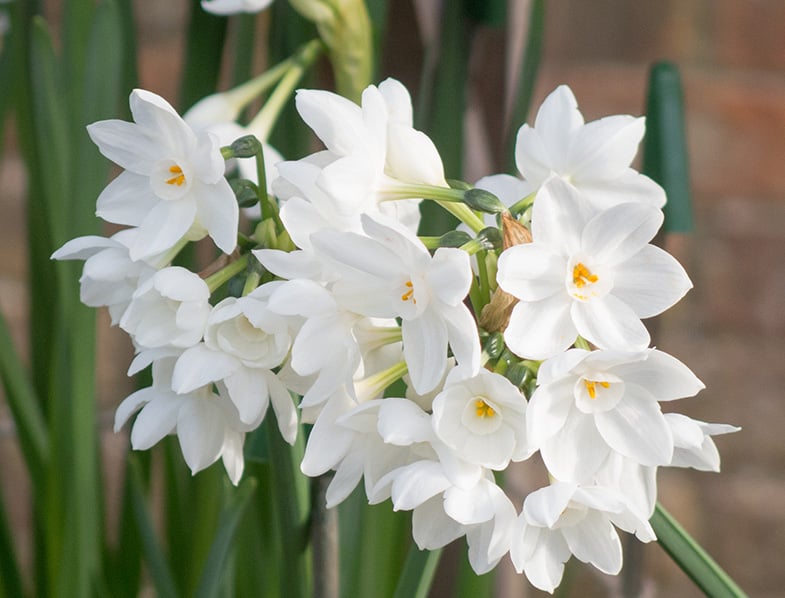
Bulb plants represent a large category of plants. However, don’t let their diversity scare you. They have simple needs and you don’t need to be very experienced to care for them. Most of them prefer direct sunlight, so bulb plants are excellent for sunny gardens.
Their diversity allows you to adapt them to any garden style. Planting them in clusters is a great way to give your garden a vibe of abundance. Bulb plants don’t mind getting crowded and they get along well with most plants. You can combine them with pest repelling plants to protect them from deer and squirrels. Due to their rainbow of colors, bulb plants are a great way to attract bees, butterflies, and other pollinators in your garden. They also make for excellent cut plants.
What are your favorite bulb plants? Let us know in the comments!
Previous Article How to Grow & Care for Cantaloupe: Complete Guide Next Article How to Grow & Care for Blue Bell Flowers: Complete GuideMiruna is an experienced content writer with a passion for gardening. She is the proud owner of an outdoor rose garden and an indoor collection of tiny succulents. She bought her first succulent 10 years ago - an adorable Echeveria Setosa. Now she owns more than 100 succulents and cacti of different colors, shapes, and sizes. Miruna is a versatile writer and, as you might have guessed, her favorite topic is gardening. Contact miruna@gardenbeast.com